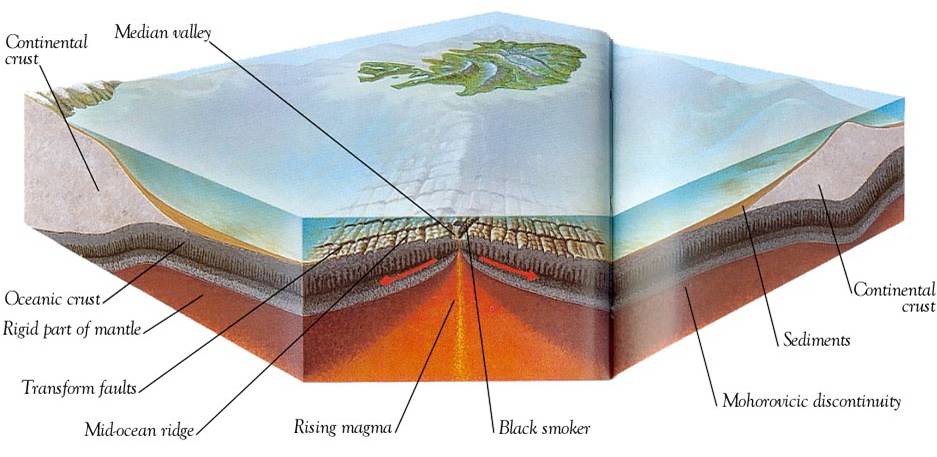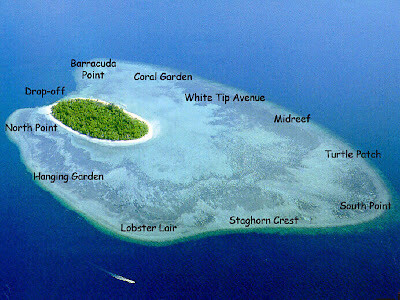Island - what first comes to your mind when you think of this word? Beach? Sea breeze? Snorkelling? Fishes? Many of us relates island to many positive experiences we have. But before we start daydreaming, have you ever wondered how is islands formed? When you are on an island, what is the type of island you are standing on? What are the unique features of this type of island?
Well, today we are heading to a special type of island known as Oceanic Island. What then is an Oceanic Island? It is a piece of land with no direct or terrestrial connection to any continent currently or in the past. 2 characteristics of an oceanic island : (i) usually separated from continent by deep ocean and (ii) usually formed by ancient volcanic activities.
Now, put on your life jacket, we are taking the speed boat to Celebes Sea (Sulawesi Sea) off the east coast of Sabah, heading for Sipadan Island, the only oceanic island in Malaysia.
Long ago, during the Miocene Period (23.03million – 5.33million years ago), 2 techtonic plates, the Philippines Plate and Eurasian Plate, were pushing into each other at the North of Sabah. This created the Crocker Range housing the highest peak in South East Asia today – Mount Kinabalu. While at the South Eastern of Sabah around Semporna, these 2 plates were drifting apart. Fault rift was created and red hot lava burst out of the cracked crust of Earth.
Separated away from Semporna by a narrow but deep channel of Celebes Sea, the same volcanic activity was happening. Dark mass of rock and pumice pops out of Earth crust and gradually expands in width and height, creating a volcano that rose vertically like a column out of the sea bed. This volcano rising steeply over 600 meters (2,000 feet) from the seabed makes the foundation for this island we see in front of us now – Sipadan Island.

Over time, the rising magma began to ease away and plumes from the volcanic blast disappeared. The volcanic cone containing unique fertile soil allow for development of a great variety of flora and fauna species that could not survive elsewhere.

Under the water, polyps of corals started to settled on the extinct volcano. In accordance to modern theory of coral atoll formation originated by Charles Darwin, the upward growth of coral on the edge will cause the volcano to sink slowly. When the volcano becomes extinct, the magma chamber residing in the interior of the volcano is depleted and will sink gradually by the increasing weight of coral growth. More interestingly for Sipadan, apart from the weight of coral bringing the volcano underwater, it is situated on the mobile active edge of the Philippine plate and it happened that Sipadan slides along the growing tectonic plates and the volcano was gradually submerged under water.
With the volcano becoming a seamount, corals began to colonize the top of the cone, expanding to as a reef and form the strange shape of a “mushroom” along the top perimeter of the seamount. Taking a closer look at the coral reef formed by limestone deposit. The sea animals that form coral include hydras, jellyfish and sea anemones. Each of these individual sea animal is known as polyps. A coral polyp has a cylinder shaped body. At one end is a mouth surrounded by tiny tentacles. The other end attaches to the limestone skeletons of dead polyps. They build their limestone skeletons by taking calcium out of the seawater. Then, they deposit the calcium carbonate (limestone) around the lower half of their body. As new polyps grow, the limestone formation becomes larger and larger.

Up above water, the reefs slowly give way to sand bank which accumulates and grows as time passes. Birds and storms bring driftwood, sea beans, plants and animals to reside on the sandy island. Eventually, the ecosystem of coastal forests and coral reefs flourished and created Pulau Sipadan we see today.
Now, let’s suit up your scuba diving gears and we are going under the water.
This famous Sipadan Island lies 5 degrees north of the equator line in the Celebes Sea. Lying 35km south of Semporna, the geographic position of Sipadan puts it in the centre of the richest marine habitat in the world, the heart of the Indo-Pacific basin. More than 3000 species of fish and hundreds of coral species have been classified in this richest of ecosystems. There are 13 amazing dive sites surrounding this 13.5 hectare island. Each with its special features and amazing resident sea creatures for you to explore!

As you can see from the cross-section diagram of Sipadan Island, beyond the sandy beach and reefs lies a drop off into the deep Celebes Sea. At this junction between the island’s reef wall and open sea, water current brings about an abundance of food and nutrients which in turn attracts thousands of fish to reside on the coral reef wall. With the presence of fishes, large pelagic such as eagle rays, scalloped hammerhead sharks and whale sharks surrounds the reef wall too. One of the biggest highlight of this island for scuba divers is to witness the residential schooling barracuda and big-eye trevally (jack fish), often gathering in thousands to form the spectacular tornado formation!
Enough said, come and witness this amazing Earthcache yourself if you are a qualified scuba diver!
Logging requirements:
Send me an email with:
1. The text “GC code and Name of cache” in the subject
2. The number of people in your group.
Answer (3), (4), (5):
(3) Owing to the unique limestone pinnacle shape of the seamount, all dives in Sipadan are wall dives, i.e. divers get to admire the beauty of the coral reef wall as you drift along with the current. During your dive, choose any one of the coral and examine closely. Explain the texture, shape and size of the coral, and explain why do you think it is limestone.
(You are looking at hundreds and thousands years of effect, so please do not touch nor destroy them, just admire by looking is sufficient. Further, many of the corals have long tentacles, if you try to ignore the long tentacles and focus on the corals’ lower body.) .
(4) As we know, the base foundation supporting Sipadan Island is an ancient extinct volcano. During your wall dive in Sipadan, as you drift gently along with the current, take a moment to look away from the wall and look downwards into the abyss. On good days, you have about 30meters to 40meters of clear water visibility. What do you observe? Given the shape of this sea volcano is a thin needle structure, with the weight of the growing coral mushroom on top, what do you think will happen to the sea volcano in the next century?
(5) Post your favourite underwater photo taken during your dive in Sipadan (Optional, and name the site) and give us your best story about your dive experience in Sipadan when you log this cache! .